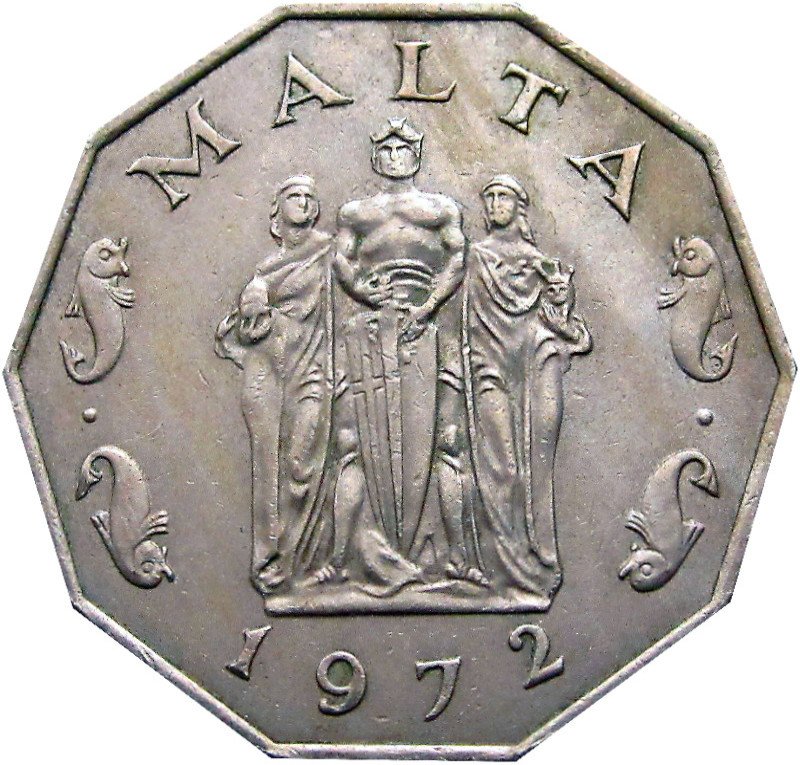Malta coins typically are thought to include coins made by the modern republic since the 1970s. With its history of centuries of conquests and allegiances, Malta had a lively early history of coin usage. Collecting Malta coins today is a fun and rich exploration for any numismatist.
And it’s not only those 20th century Maltese coins that draw so much attention. Recent silver and gold euro coins made for Malta continue to interest investors and regular collectors alike.
Malta vs. the Order of Malta
This article is about the coins of the country of Malta, a small group is islands between Italy and Tunisia in the Mediterranean Sea. It is not to be confused with the Order of Malta, which was originally based in Malta but which is now a separate entity, especially where coins are concerned.
More on MegaMinistore: Denmark coins: History and collecting guide
Coins used in Malta in ancient times
Archaeologists have found that the Carthaginians visited Malta more than 2,600 years ago. They brought with them various types of coins. In 480 B.C., they established multiple settlements on the island. The Carthaginians used coins that featured several types of symbols – horses, many types of trees, well-known leaders and elephants.
In 218 B.C., the Roman Empire conquered the island. The Romans brought coins that contain silver, gold, copper and bronze. Many coins also contain orichalcum, an ancient metal. The Romans ruled the island for more than 1,000 years. Eventually, however, several other groups established independent settlements.
During the Middle Ages, Norman traders frequently visited the islands. The Norman traders brought coins, along with their other products and spices. Eventually, the Norman settlers conquered Malta, and they traded using their own coins. Many designs on these coins featured horses, lions and several important structures. The Norman settlers minted many coins that contained copper, yet some coins also contained silver.
More on MegaMinistore: Greece coins: Unique collectibles from southern Europe
During the 16th century, a group called the Knights of St. John conquered Malta. These new conquerors brought coins that had custom designs. Some coins honored well-known knights, while others had a coat of arms. In 1798, French soldiers occupied Malta. In 1800, British soldiers conquered the island.
After all of this turbulent history, it wasn’t until the late 20th century that Malta finally started making its very own coins as a modern republic.
Modern Malta coins
In 1913, Great Britain minted a single design for use in Malta. This was worth 1/3 of a farthing. Many Malta coin collectors may wish to find a nice copy of this bronze coin for their collections.
Malta became a republic in 1974. Since the 1970s, the country has minted its own Malta coins with its own custom symbols and designs. These new coins used a decimalized currency system.
Browse 155 current Malta coins for sale offers here
1 pound = 100 cents
10 mils = 1 centIn the mid 1980s, the pound became the Maltese lira
In addition to the regular coins for currency, several collector’s coins and proofs were made in the ensuing years. The higher denominations of pound coins were made of silver, and the highest-value Malta coins were made with gold. These include some striking examples of bold, simple designs related to Maltese subjects such as local history and the sea. Inscriptions are simple; the name of the country is usually as simple as MALTA or sometimes REPUBBLIKA TA’ MALTA.
Another oddity that may appeal to some Malta coin collectors is a $10 gold coin minted in Fiji in 2012. Limited to a mintage of 1,000 coins, this coin depicting the Maltese capital of Valletta was part of a series of coins featuring cities and landmarks around the world.
More: Italy coins: Guide to collecting the coins of Italia
Post-euro coins in Malta
In 2004, Malta finally joined the European Union. Soon afterwards, in January 2008, Maltese citizens began to use euros. Even afterwards, Malta has continued to see special coins minted. There have been several silver and even gold proofs, in euros, featuring Maltese topics. The limited runs of these pieces has increased their value, but they are still affordable for collectors and investors interested in recent coins such as these.
Warning about buying Malta coins
Many coin sellers forget, or don’t know, to distinguish between the country of Malta and the Order of Malta. Be sure you know which you are buying if you see some coins you like. If you collect both (which many do, as the coins are quite complimentary), be sure to separate them in your collection.
See also: Finland coins: Suomi’s collectible numismatic history
Many a buyer is building or starting their own Maltese coin collection. If you’re interested in getting into Maltese coins yourself, pick some of your favorites and watch the sales listings.










